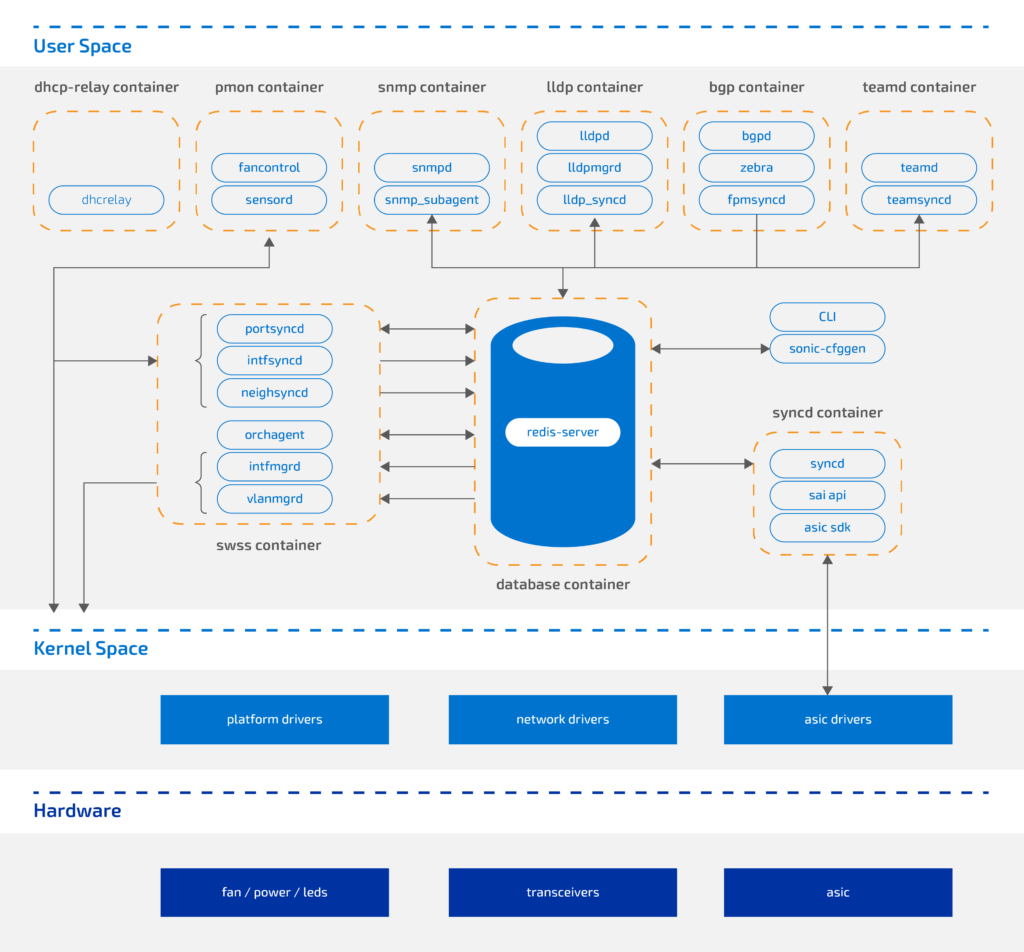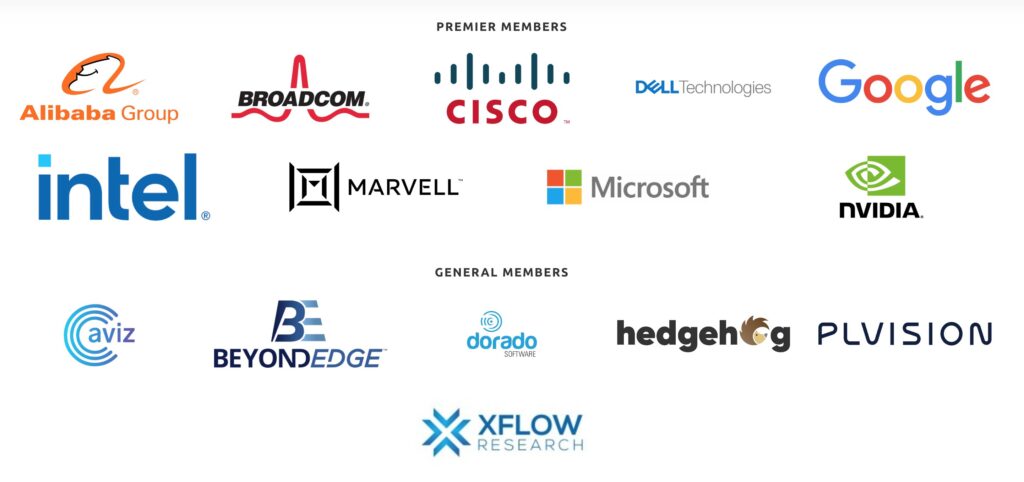In this article, we aim to guide enterprises and service providers in determining whether SONiC, a popular open-source network operating system, is a viable choice for enhancing their on-premises data center and private cloud networks.
Contents
The Evolution of SONiC: From Microsoft's Network to an Industry-Recognized Solution
The open network operating system SONiC (Software for Open Networking in the Cloud) initially originated from Microsoft’s need to effectively manage switches from multiple manufacturers within their expansive network infrastructure. Over time, it has evolved into a well-established solution with a broad range of features and functionality to cover data-center, enterprise, and telecom use cases.
One of the primary problems SONiC solves is the need for a network operating system that is highly adaptable and allows optimizing OpEx, gaining control over the network, and avoiding vendor lock-in.
Proprietary systems often lack the flexibility required to meet the diverse demands of modern businesses, leaving users heavily dependent on the provider for updates, feature enhancements, and support. This dependency extends to the financial aspect as well, since users are obligated to regularly pay substantial fees.
The open networking concept involves the decoupling of hardware and software components, driving interoperability and innovation, as vendors often offer bundled solutions.
Decoding SONiC: What Makes it a Standout Network Operating System
SONiC is as a Linux-based NOS built on a Switch Abstraction Interface (SAI) that ensures an API layer across various ASIC vendors and the NOS. Its open-source nature offers adaptability, scalability, and flexibility, benefiting from ecosystem collaboration between hardware manufacturers, service providers, and enterprises. It provides a level of control that was previously unavailable.
Its architecture is structured on a three-layer system, ensuring robust performance and adaptability across various hardware configurations. In other words, SONiC is a collection of kernel patches, device drivers, utilities and more, combined with Linux distribution.

SONiC’s Architecture
Over time, SONiC has garnered recognition as a proven solution for industry giants like Alibaba, eBay, LinkedIn, Tencent, and more. The adoption of this NOS has not only enabled substantial long-term cost-efficiency for these companies in their network infrastructure but has also streamlined network management by aligning the top application level with the infrastructure.
- SONiC’s cloud-native design stands out as a significant advantage. It guarantees smooth integration with cloud-based applications, enabling organizations to unlock the full potential of these technologies.
- The container-based architecture enables seamless operation with different components, allowing businesses to tailor NOS to their unique use cases and evolving networking standards. Everything within SONiC is a part of a specific container. Each of these containers can be updated, customized, loaded with more features, etc. so that you could bring in the set of software you need and upgrade the systems running on the switch. To add a new capability, engineers develop a new container and deploy it on switches. This containerization allows for a wide variety of configuration and management tools on top of SONiC, and thus for tying the switches to the overall service management platform.
- In the world of open projects, success often depends on community engagement. In the case of SONiC, everything has come together seamlessly because a dynamic community of networking experts actively contributes to its development. Moreover, oversight from hundreds of companies and thousands of developers has made SONiC into a highly secure and resilient system.
PLVision has also played an important role in shaping SONiC since its early days. We are among the top 15 contributors to SONiC, alongside technology giants like Broadcom, Google, Nokia, and others. Furthermore, in 2023, our leading expert was elected as a General Member Governing Board Representative for the SONiC project, showcasing our deep involvement and leadership in the open networking community.

Premier Members of the SONiC project
Overall, SONiC is actively growing, receiving regular updates to continually improve its efficiency, expand its feature set, and enhance its readiness for integration with third-party solutions.
Discover the full potential of SONiC and how it’s becoming the preferred choice for dynamic, scalable, and cost-effective networks. Download our white paper for an in-depth overview of SONiC NOS!
The Tricky Deployment Realities of Community SONiC
SONiC’s free community edition, available for download on GitHub, holds significant appeal for non-hyperscaler enterprises and service providers seeking a cost-effective system. However, implementing the community version involves several notable challenges.
- The promise of a free OS is counterbalanced by the need for substantial investment in human resources and lab infrastructure to ensure its reliability. It’s important to note that SONiC in its standard form, like any other software solution, may not seamlessly cover all the unique requirements of every organization. Customization is required to tailor SONiC to specific needs, thus adding an extra layer of complexity and resource commitment to the deployment process. For companies without the expertise to navigate the intricacies of customization, the decision to adopt SONiC can be a huge challenge.
- As SONiC evolves with updates and improvements, an organization must also allocate resources for ongoing maintenance. Staying current with the latest releases, addressing potential issues, and ensuring compatibility with other components of the network infrastructure demand a continuous investment in time and expertise. It is also essential to proactively offer and implement NOS best practices to optimize overall network performance and security.
- Currently SONiC boasts compatibility with over 120 platforms. However, it’s important to note that Community SONiC may not seamlessly operate with all of them right off the bat. A critical factor limiting SONiC’s use across all supported platforms is the ownership and licensing of SAI. Introducing new features to SONiC, whether by the community or an in-house team, requires corresponding adjustments. Therefore, for a genuinely “open SONiC” experience, you need an “open SAI” in tandem.
Navigating these challenges requires a thoughtful approach, with particular need for strategic vision, a skilled team, and a long-term commitment to customization and ongoing support for SONiC.
Your SONiC, Your Way: How PLVision Can Help You in Obtaining a Vendor-Neutral Distribution
At PLVision, we design and develop tailored SONiC-based solutions for different use cases, covering the full product development life cycle or any particular phase. We offer a quick and low-risk way to determine if SONiC is the right fit for you by organizing a free online call where we can discuss your needs and present your SONiC enablement roadmap. This allows you to explore and understand the potential benefits and applicability of SONiC for your specific requirements.
With its extensive expertise in the development of SONiC-based products and knowledge of various switch silicon SDKs and architectures, our team ensures a swifter and cost-effective deployment, reducing challenges and expenses. This approach guarantees organizations full control over their SONiC distribution without incurring subscription fees or licensing costs for third-party providers.
Summary
SONiC’s key advantage lies in its capacity to effortlessly manage hardware from various manufacturers, so long as they are all SONiC-compatible. This allows network infrastructure to be treated as a single cohesive unit.
Adding to its appeal, SONiC benefits from the support and oversight of the Linux Foundation, a cornerstone of open-source initiatives. This not only instills confidence in its reliability, but also underscores its alignment with industry standards and best practices, ensuring continuous development and innovation.
There has been a trend of tier 2 and 3 B2C and B2B cloud services progressively embracing SONiC. The positive momentum is reflected in market predictions, with analysts forecasting SONiC-based data center switch revenue to reach $2.5 billion, constituting 14.4% of the total data center market by 2025.
In essence, the involvement of experienced companies adds a layer of reliability and strategic insight to SONiC’s implementation, making it a more accessible and impactful solution for organizations seeking to leverage their network infrastructure. Having a product development partner brings valuable benefits including streamlined processes, accelerated time to market, and a wealth of industry insights.
Let’s discuss your software development needs!
- How AI and Networking Are Rewiring Each Other – and Why Open Networking Matters - October 15, 2025
- PLVision’s SONiC-Based Services: Accelerating Open-Source Network Transformation - September 3, 2025
- SONiC Lite for Edge and Campus: Powering Your Digital Independence - August 18, 2025




